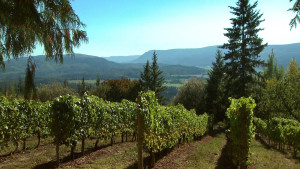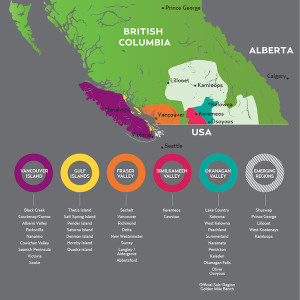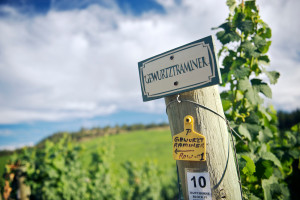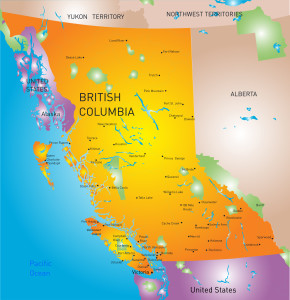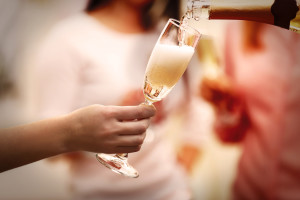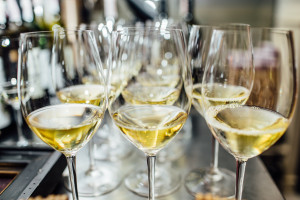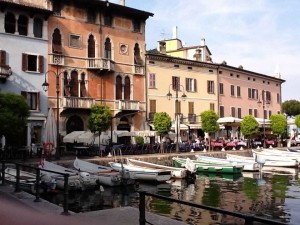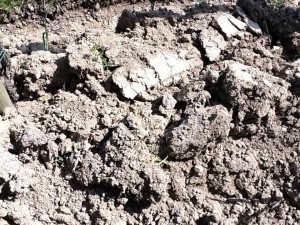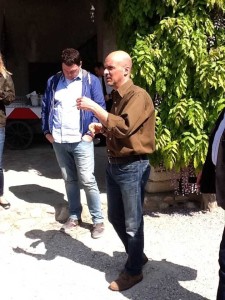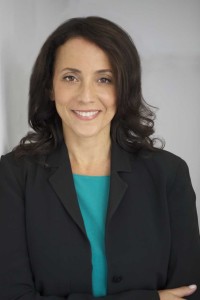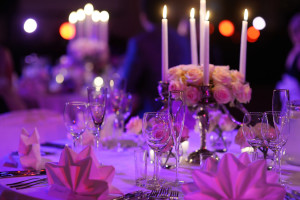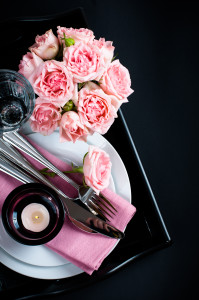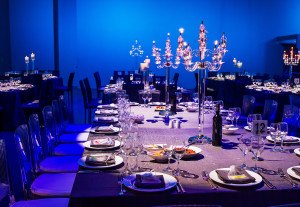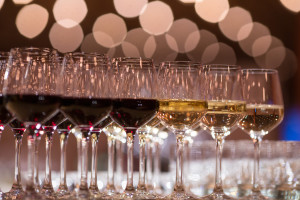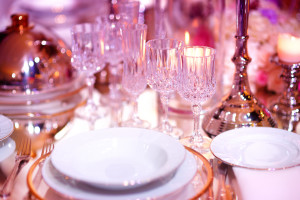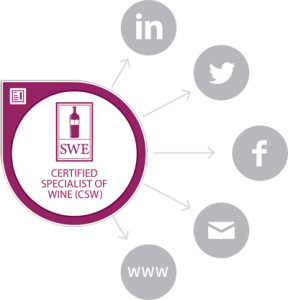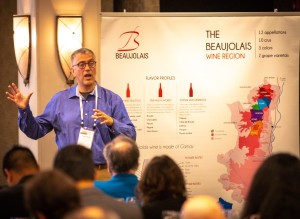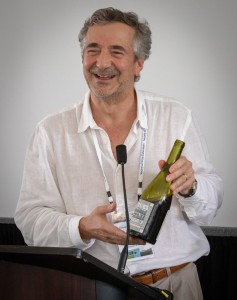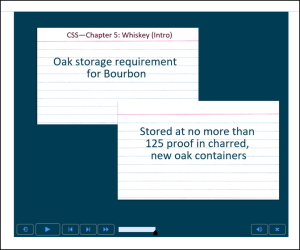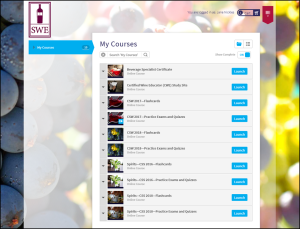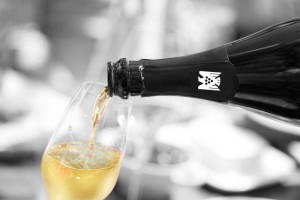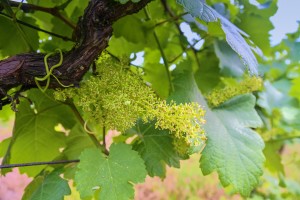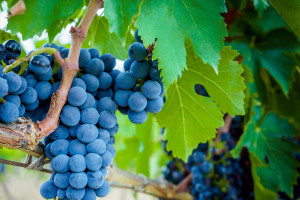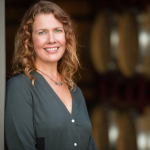Today we have a preview of a session to be presented during SWE’s 42nd Annual Conference, to be held on August 15–17, 2018 in the Finger Lakes Region of New York State. Our guest author is Edward Korry, CHE, CSS, CWE, who tells us about his upcoming session titled “Roussillon: An Ancient and Reemerging Wine Region”.
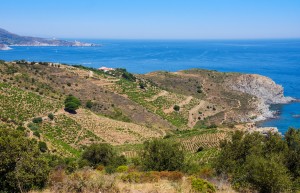
The rocky shore alongside vineyards in Banyuls
I had the great privilege and enjoyment to be on a master class wine educational trip with colleagues to the Roussillon in the summer of 2017, hosted by Eric Aracil, director of the Conseil Interprofessionnel des Vins du Roussillon (CIVR). While intense, it was eye opening. We were so well treated and as reflecting most wine producers everywhere, we met some of the most generous, warm and humble of people. We tasted, ate (boy did we gourmandize) and drank well, soaking in as much as possible in the week spent there.
Roussillon is a small and beautiful part of the French Mediterranean surrounded by three mountain ranges. With the two year-old reorganization of France’s state (département) system, Roussillon is no longer politically the Pyrénnées Orientales but is now part of the Occitanie département. While it is usually connected to its northerly much larger wine growing neighbor of Languedoc, only a small percentage of its wines wines fall under the Pays d’Oc appellation. But, it is culturally, linguistically, and historically distinct as it only became assimilated into France with the Treaty of the Pyrenees in 1659. Known as Haut Catalanie, a third of the population still speaks Catalan and another twenty percent understands it. Its capital, Perpignan, was formerly the capital of the Kingdom of Majorca which included Spanish Catalonia.
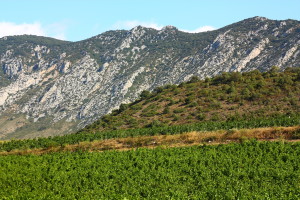
.
While viticulture has been practiced for 28 centuries beginning with the ancient Greeks, it was subsequently influenced by Romans, Visigoths, Spanish, Catalan and the French. Arguably one of the greatest influencers was Arnaud de Villeneuve (Arnau de Vilanova) who led the development of mutage or fortification of wine in 1285.
What I didn’t know was that, in addition to being the rector if the University of Montpellier, he was the court physician to the King of Majorca in Perpignan so it is no wonder that Roussillon developed this style of wines with its aromatic varieties including the Muscat de Rivesaltes and Grenache. What also allowed for the growth of this industry were the development of the Midi Canal in the 17th century and the opening of the railways to market its wines to the rest of France in the 19th century.
The fortified wines or Vins doux Naturels of Roussillon represent over 80% of all fortified wines produced in France, but only 20% of its own current wine production. The breadth and depth of the VdNs is truly amazing—from the fresh and floral Muscats de Rivesaltes and the plummy, blackberry freshness of the Grenats (Grenache) of Maury, Rivesaltes and the rimages (vintage-dated reds) of Banyuls, to the complex oxidized iterations of aged tuilé, ambré, hors d’age and rancio wines of these appellations.
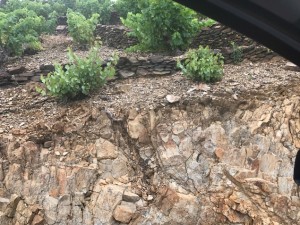
Schistous soils with little topsoil
The fortification differs in Roussillon from other fortified wines, in that the neutral pure grape spirit (at 96%) used to produce these wines results in fortified wines of lower alcohol—such as 14.5% min abv—than those of Port or Madeira. Those attending my SWE Conference session in Rochester this summer will be able to taste a sampling of these delicious and complex wines. One of the wines I will unfortunately not be able to show is the rancio style, which represents a tiny fraction of VdNs but they certainly connected dots for me to the wines made in the areas along the Mediterranean and most notably Jerez/ Sherry. Touring cellars in Latour De France, for example, and tasting a vertical sample of vintage ambré wines that have up to 60+ years of barrel maturation was both memorable and revelatory- the kind of experience leaving a permanent imprint on one’s sensory memories.
While Roussillon has been best known for its VdN’s, it is the development of its dry wines that have recently captured wine lovers’ and critics’ attention. This more expansive and recent development is unfortunately due, in large measure, to the global decline in fortified wine sales and the need for winegrowers to survive. One serendipitous consequence of having dry wines is that we can detect greater differences between the various terroirs. Roussillon has many different terroirs shaped by different microclimates, altitudes, soils, sun exposure, heat and winds.
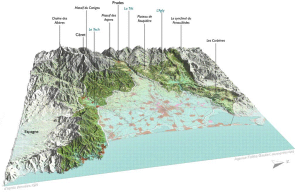
Image Source: CIVR
The reason for my emphasis on Roussillon’s distinctiveness from its neighbors is that it translates to a large degree in its wines. Roussillon is shaped like an amphitheater ringed by three mountain ranges, the Corbières, the Pyrennees and the Albères, leading to the Mediterranean. It is has three main rivers (Agly, the Têt and the Tech) forming three distinct valleys.
This topography reflects numerous geological upheavals resulting in a wide diversity of microclimates and soils. While its climate is Mediterranean, with an average of 317 days of sunshine, it has the advantage of seven cooling and (mostly) drying winds, which enables winegrowers to maintain organic and biodynamic practices. (The Vent de l’Espagne is an exception as it brings humidity from the Mediterranean). In fact, the region ranks first in France as a percentage of these practices in France. Its soils are primarily granitic, schistous, gneiss, limestone, with rocky pebbles and sand. The primary wind is the Tramontane that plays a similar role to the Mistral.
Roussillon has 18 distinct appellations (AOPs and IGPs). The most prolific of the AOPs is the Côtes du Roussillon, while the Côtes du Roussillon-Villages represents about 11% of the total production. There are 4 designated village appellations within this category, three of which—Tautavel, Latour de France, and Les Aspres—will be part of the tasting line-up at my session at the SWE Conference in Rochester.
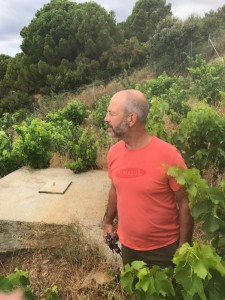
Jean Francois Deu
There are 2,200 small, family vineyards with an average size of 25 acres with 350 private producers but with 75% of wine production driven by 25 co-operatives. What we witnessed in Roussillon is the impact of investments, outside expertise, the application of the most innovative technology while maintaining a focus on the vineyard. Examples of outsider investments include Gérard Bertrand, Michel Chapoutier and David Phinney of Orin Swift fame. Innovation applies to the co-ops such as Les Vignerons de Tautavel Vingrau Co-op and its Syrousse wines. At Chateau de l’Ou the owner and winemaker, Séverine Bourrier learned her craft in Bordeaux. The farming is organic, but she employs small stainless steel fermenters for individual plots, concrete eggs and uses a punch down technique with her own bare hands for over 90 barriques of Syrah where the heads of the barrels have been removed. Not good for one’s hands!
We saw the most amazing vineyards—some of which could only be reached via 4-wheel drive—in Banyuls, where everything needs to be done by hand due to the steepness of slopes and the tenuousness of the soil. Over 80% of Roussillon’s vineyards are on slopes up to 2,100 feet in altitude. I will never forget walking through vineyards of old Grenache vines with winery owner Jean Francois Deu, who walked around the sharp friable schistous rocky vineyards in his bare feet, with his wry and irreverent humor. His vineyards, which are certified biodynamic, reflect the man- hardy, self-sufficient and yielding something wonderful for all of us to enjoy. The very minimal topsoil needs to be continuously hand-collected after significant rainfall from lower levels, collected and spread over the vineyard again. His winery is aptly named the Domaine du Traginer, which translated from Catalan, means The Mule Worker’s Domain. And, while his persistence and obstinacy may have mulish characteristics, the name reflects practices he employs- he has a mule to help him along with a flock of sheep that roam free.
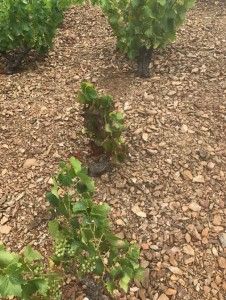
.
The reds not only have great balance and distinct varietal characteristics but include the aromas of the garrigue. Garrigue is the French word for the scrubland one finds in southern France and is comprised of different wild growing plants, herbs and flowers. Particularly widespread are wild fennel, wild thyme, rosemary, cistus or rockrose, lavender, olive and holm oak trees. One smells these aromas in the air, and their volatile aromatic compounds attach themselves to the skins of maturing grapes that lend added aromatic complexity to the wines, giving them a greater sense of place.
While there were very many delicious Grenache red and rosé wines we prized, for me the Carignan Noir wines were most revelatory. Normally associated as being very tannic and lacking defined fruit character, the wines based or blended with Carignan had deep violet floral notes and intense black fruit flavors with rounded spicy tannins. Examples included Ferrer Ribiere’s Carignan Noir 2014 from 140 year old vines and Roc des Anges Relief 2014 from the Côtes de Roussillon and Côtes de Roussillon Villages. We found some ome outstanding blends of Grenache Noir, its clone Lladoner Pelut, Carignan and Syrah— including Domaine des Schistes, which we will taste as well.
Critics unanimously praise many of the wines of Roussillon whether in their newer dry iterations or for the VdN treasures that are so relatively inexpensive. They have character, reflect a particular sense of place, of history and of culture and above all reflect man’s indomitable will to contour and bend nature to produce special and unique wines.
Ed’s session, Roussillon: An Ancient and Reemerging Wine Region, will be held on Thursday, August 16, 2018 at 4:45 pm as part of the 42nd Annual Conference of the Society of Wine Educators.
About the presenter: Edward Korry is an Associate Professor and Chair of the Beverage & Dining Service Department in the College of Culinary Arts at Johnson & Wales University in Providence, RI. Edward is a Certified Hospitality Educator, Certified Wine Educator, a Certified Specialist of Spirits, a registered tutor of the Wine & Spirits Education Trust, a Formador Homologado del Vino de Jérèz (Certified Sherry Wine Educator), and a certified Bordeaux Wine Educator. In addition, Edward served as President of the Society of Wine Educators 2014-2016, and as an executive board member of the US Bartenders Guild Master Accreditation program. He also leads the judging for the prestigious industry food & beverage VIBE Vista Awards, and is a wine judge at international competitions. He teaches and has developed classes that specialize in wine, beer, spirits, mixology, coffee, tea, and restaurant management. He championed the development and implementation of beverage and sommelier concentrations/minors at Johnson & Wales University. Edward lectures at national and international conferences,and writes beverage articles at home and abroad. He worked and managed in the hotel/restaurant industry prior to joining Johnson & Wales in 1983 as Food & Beverage Director for several of the university’s practicum properties.
